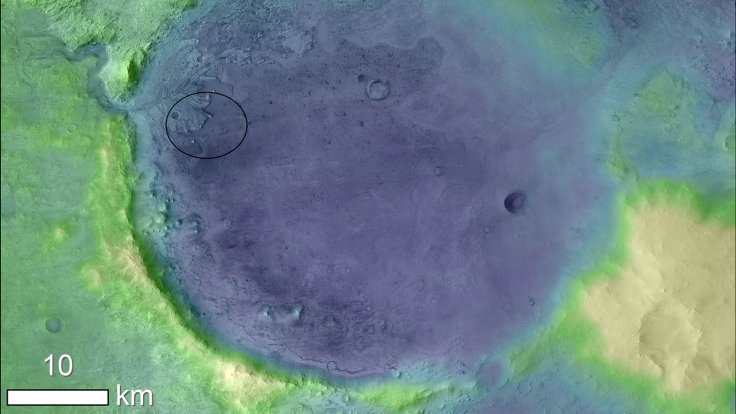As NASA is busy gearing up with its 2020 Mars mission, a new study has suggested that the landing site of the rover could be the perfect place to discover possible alien fossils. This study report revealed that the rover's landing site holds minerals that often preserve fossils on earth, and if aliens had once lived on Mars, then the possibilities of discovering extraterrestrial fossils will be quite high.

Jezero Crater: The Martian landing site
NASA is planning to land its Mars rover on the Jezero crater, a 28-mile wide geographical structure on the Red Planet. As per the new study report, this crater is home to hydrated silica, a mineral that is very good at preserving signs of life. It should be noted that silica is a crystalline structure made up of oxygen and silica, and it can be found in quartz, sand, and glass.
Hydrated silica is one of the hardest materials on earth, and it is capable of holding water in its crystalline structure. This material is capable of resisting harsh weather conditions, and it makes it suitable for preserving softer materials that find their way inside.
Silica for fossil preservation
"Silica has the highest demonstrated potential of any phase to preserve microfossils on Earth and therefore may host potential biosignatures on Mars. We detected hydrated silica in Jezero crater, the landing site of the National Aeronautics and Space Administration's Mars 2020 rover mission, by applying Dynamic Aperture Factor Analysis/Target Transformation to images from the Compact Reconnaissance Imaging Spectrometer for Mars," wrote the researcher in their study report published in the journal Geophysical Research Letters.

Rivers in Jezero Crater
Jesse Tarnas, a planetary scientist at Brown University and one of the authors of the study report revealed that Jezero Crater on Mars was once home to rivers that craved a delta on the Red Planet. Tarnas believes that hydrated silicas formed in these deltas might be preserving valuable historical details about Mars.
In the meantime, Jim Green, a chief NASA scientist, has recently predicted that alien life will be discovered on Mars within 2021. The NASA scientist also added that humans are not ready to accept the realities surrounding the existence of extraterrestrials.









